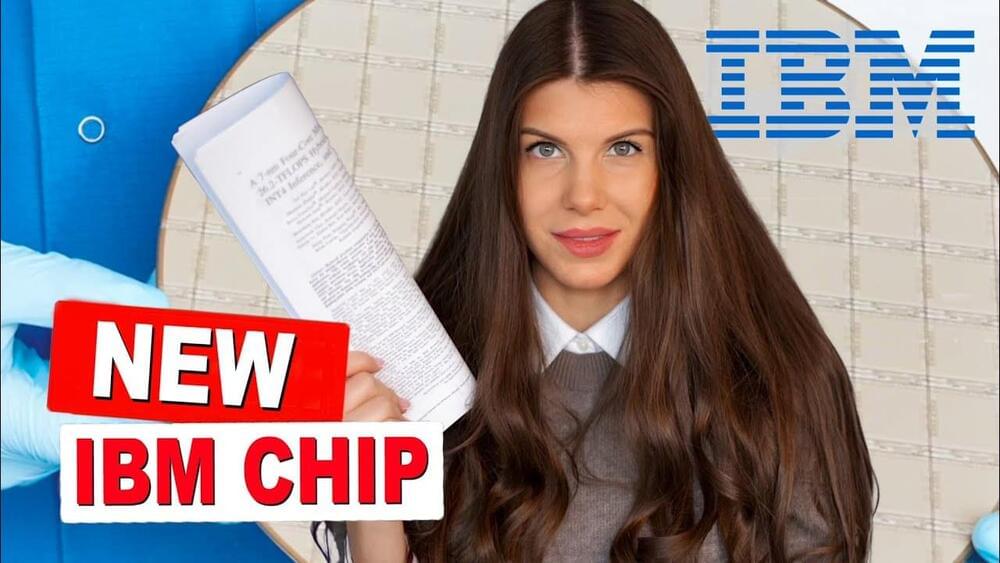Oct 24, 2022
New IBM Computer Chip Explained
Posted by Ken Otwell in categories: media & arts, robotics/AI
New AI processing chip by IBM…
In this video I discuss new IBM AI Chip — Artificial Intelligence Unit.
#IBM

New AI processing chip by IBM…
In this video I discuss new IBM AI Chip — Artificial Intelligence Unit.
#IBM
Tandem solar cells made of perovskite and silicon enable significantly higher efficiencies than silicon solar cells alone. Tandem cells from HZB have already achieved several world records. Most recently, in November 2021, HZB research teams achieved a certified efficiency of 29.8% with a tandem cell made of perovskite and silicon. This was an absolute world record that stood unbeaten at the top for eight months. It was not until the summer of 2022 that a Swiss team at EPFL succeeded in surpassing this value.
Three HZB teams worked closely together for the record-breaking tandem cell. Now they present the details in Nature Nanotechnology. The journal also invited them to write a research briefing, in which they summarize their work and give an outlook on future developments.

Edward Boyden is a Hertz Foundation Fellow and recipient of the prestigious Hertz Foundation Grant for graduate study in the applications of the physical, biological and engineering sciences. A professor of Biological Engineering and Brain and Cognitive Sciences at MIT, Edward Boyden explains how humanity is only at its infancy in merging with machines. His work is leading him towards the development of a “brain co-processor”, a device that interacts intimately with the brain to upload and download information to and from it, augmenting human capabilities in memory storage, decision making, and cognition. The first step, however, is understanding the brain on a much deeper level. With the support of the Fannie and John Hertz Foundation, Ed Boyden pursued a PhD in neurosciences from Stanford University.
The Hertz Foundation mission is to provide unique financial and fellowship support to the nation’s most remarkable PhD students in the hard sciences. Hertz Fellowships are among the most prestigious in the world, and the foundation has invested over $200 million in Hertz Fellows since 1963 (present value) and supported over 1,100 brilliant and creative young scientists, who have gone on to become Nobel laureates, high-ranking military personnel, astronauts, inventors, Silicon Valley leaders, and tenured university professors. For more information, visit hertzfoundation.org.
Continue reading “Hybrid Intelligence: Coupling AI and the Human Brain | Edward Boyden bigthink” »
Using artificial intellgence to find possibilities while humans gauge their significance is proving to be a powerful new form of scientific discovery.
Most efforts so far have relied on external heating and cooling systems, but these add a lot of bulk and also tend to use up a considerable amount of energy themselves. The researchers’ innovation, outlined in a recent paper in Nature , was to add an extra component to the batteries: a sheet of nickel foil just a few micrometers thick between the stacked electrodes of each cell.
This ultra-thin sheet is used as a heating element, and when a current is passed through it the cell heats up to 149° Fahrenheit in about a minute. This temperature is maintained through charging, but the cell then quickly cools back to room temperature as soon as the current is switched off.
When they tested their approach, the researchers found that they could charge a 265 watt-hour battery to 70 per cent in 11 minutes. They also showed that heating the battery didn’t seriously affect its lifetime, as it survived 2,000 cycles of charging, which would provide enough energy to drive more than 500,000 miles overall.

https://youtube.com/user/COPL18
We teach the scientific rationality of age reversal, radical life-extension, & we provide fellowship for longevity enthusiasts. Longevity lives here!
We use cookies on our website. Some of them are essential, while others help us to improve this website and your experience. If you are under 16 and wish to give consent to optional services, you must ask your legal guardians for permission. We use cookies and other technologies on our website. Some of them are essential, while others help us to improve this website and your experience. Personal data may be processed (e.g. IP addresses), for example for personalized ads and content or ad and content measurement. You can find more information about the use of your data in our privacy policy. You can revoke or adjust your selection at any time under Settings.
By modifying the embryonic skin cells of mice, researchers created hair follicles that grew up to 3 millimetres long over one month.
